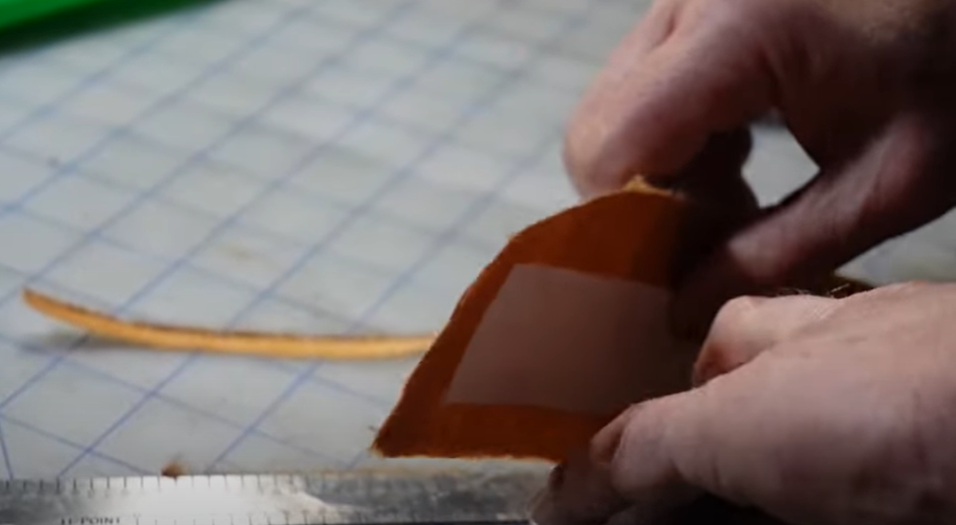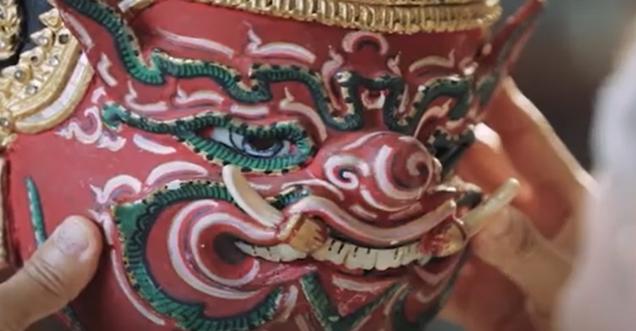
How 25 Ancient Crafts Survived For Centuries
These crafts have survived for centuries because they are essential to human life and culture. They provide us with food, clothing, shelter, and other necessities. They also allow us to express ourselves creatively and to connect with our past.
In today's world, many of these crafts are threatened by
industrialization and globalization. However, there is a growing movement to
revive and preserve these traditional crafts. People are learning these ancient
skills and creating new and innovative products. They also share their
knowledge with others and teach them to appreciate these crafts.
Here are 15 ancient crafts that have survived for centuries:
1. Papermaking (China, 2nd century BC)
Papermaking in China has a long and significant history, dating back to the 2nd century BC. The invention of paper is traditionally attributed to Cai Lun (or Ts'ai Lun), a eunuch and court official in the Han Dynasty. However, it's important to note that papermaking in China was a gradual process, and Cai Lun is often credited with making essential improvements to the existing papermaking techniques.

Here's a brief overview of the history of papermaking in China during the 2nd century BC:
Early Developments: Before the invention of paper, various materials were used for writing and record-keeping in ancient China, including bamboo strips, silk, and wooden tablets. These materials could have been better for mass production, and there was a need for a more practical and cost-effective writing medium.
Cai Lun's Contribution: Cai Lun is said to have introduced significant innovations in papermaking around 105 AD during the Eastern Han Dynasty. He is credited with developing a papermaking method from mulberry bark, bamboo fibres, and other plant materials. His process involved breaking down the fibres, mixing them with water, pressing the mixture into sheets, and then drying them. This early paper was thicker and less refined than modern paper, but it significantly improved existing writing materials.
Spreading Knowledge: The knowledge of papermaking gradually spread throughout China and other parts of Asia. By the 3rd century AD, paper had become widely used for writing and other purposes, such as packaging and artwork.
Advancements in Papermaking: Papermaking techniques continued to evolve and improve over time. For example, during the Tang Dynasty (618-907 AD), paper quality improved significantly, making it more suitable for printing. The invention of woodblock printing during this period also contributed to the increased demand for paper.
Spread of Papermaking Techniques: Chinese papermaking techniques eventually spread to other parts of Asia, including Korea and Japan. The Silk Road and maritime trade routes were crucial in disseminating this technology to different cultures.
Impact on Civilization: The invention of paper profoundly impacted Chinese civilization and beyond. It revolutionized communication, education, and the spread of knowledge. It allowed for the creation of books, which became more affordable and accessible to a broader audience, contributing to society's intellectual and cultural development.
Papermaking in China was a crucial innovation in human communication and cultural history. It eventually spread to the rest of the world, leading to the development of the paper industry as we know it today.
2. Glassblowing (Syria, 1st century BC)
Glassblowing is an ancient technique for creating glass objects that revolutionized the glass industry and profoundly impacted the production of glassware and art. It is believed to have originated in the region of Syria during the 1st century BC.
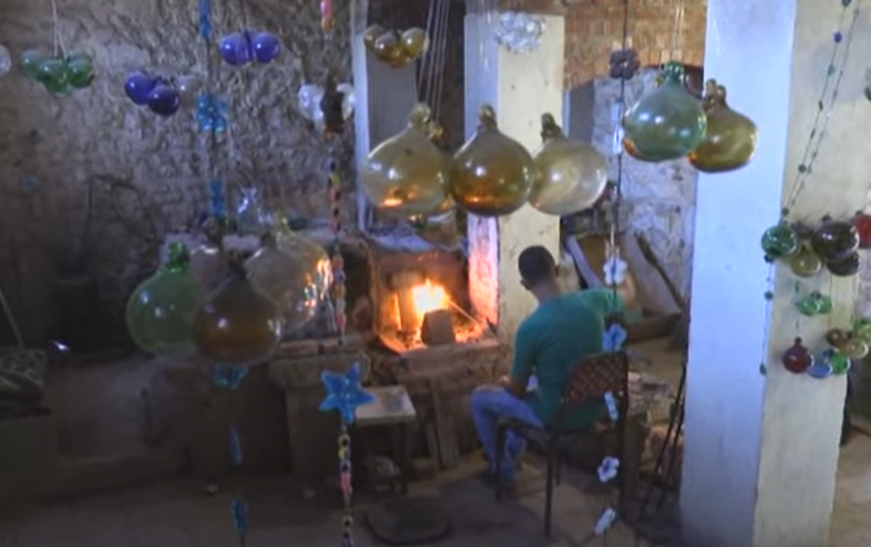
Here's an overview of the history of glassblowing and its development in Syria:
Early Glassmaking: Before glassblowing, objects were primarily made using core forming and slumping techniques. These methods were labour-intensive and limited in terms of complexity and design.
Invention of Glassblowing: The invention of glassblowing is attributed to Syrian craftsmen, possibly in the city of Sidon or the region of Phoenicia (part of modern-day Lebanon and Syria) during the 1st century BC. Glassblowing allowed for the creating of intricate and delicate glass objects with relative ease and speed.
Technique: Glassblowing involves gathering molten glass on the end of a hollow tube (blowpipe) and inflating it by blowing air through the tube. The glassblower could shape and manipulate the molten glass with various tools, creating different forms and designs. This technique made it possible to produce items like glass vessels, bottles, lamps, and decorative objects with greater precision and efficiency.
Advantages: Glassblowing offered several advantages over previous glassmaking methods. It allowed for greater creativity and artistic expression and the production of thinner, more lightweight glassware. This innovation also made glass objects more affordable and accessible to a broader audience.
Spread of Glassblowing: The knowledge of glassblowing quickly spread throughout the Roman Empire and beyond, leading to the establishment of glassblowing workshops in various regions. For example, the Roman city of Cologne became a centre for glassblowing during the 1st century AD.
Artistic and Functional Glassware: Glassblowing not only contributed to the production of everyday items but also led to the creation of intricate and decorative glass pieces. Roman glassblowers, in particular, were known for their skill in producing colourful and ornate glass vessels.
Continued Development: Glassblowing techniques continued to evolve, leading to innovations such as the use of moulds, which allowed for more standardized and mass-produced glassware.
Glassblowing remains a significant technique in contemporary glass art and industry, and its historical roots in Syria during the 1st century BC mark a crucial turning point in the history of glass craftsmanship. This innovation changed how glass objects were made and influenced the development of art, technology, and trade in ancient times.
3. Carpentry (Mesopotamia, 5000 BC)
Carpentry, the craft of working with wood to construct buildings, furniture, and other structures and objects, has ancient origins dating back to early human civilizations. Mesopotamia, a region between the Tigris and Euphrates rivers (part of modern-day Iraq, southeastern Turkey, and southwestern Iran), played a significant role in the development of carpentry around 5000 BC.
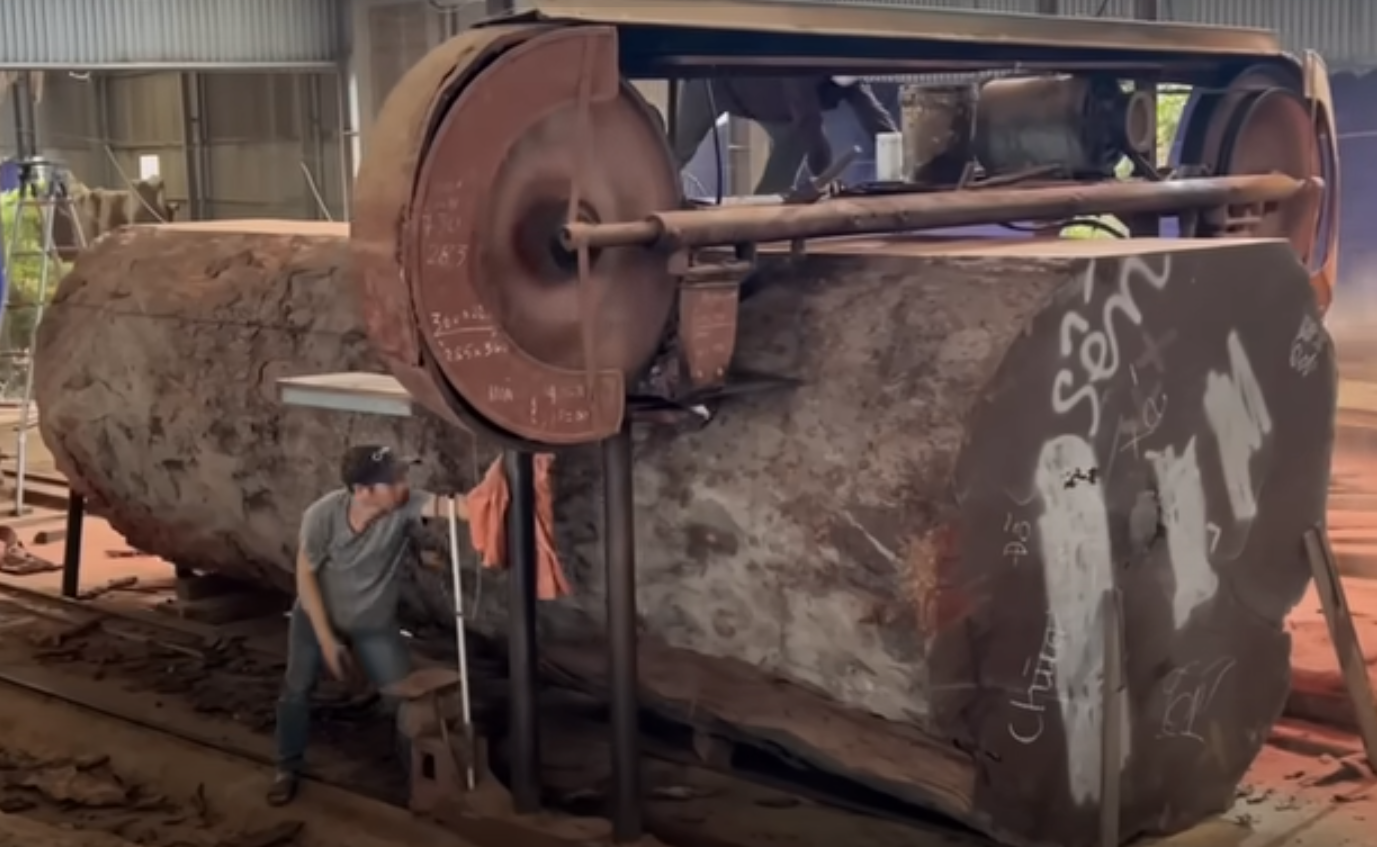
Here is an overview of carpentry in Mesopotamia during that time period:
Early Woodworking: The people of Mesopotamia were among the first to recognize the versatility and abundance of wood as a construction material. They used locally available types of wood, such as palm, cedar, and cypress, for various purposes.
Architectural Achievements: Mesopotamians are known for their architectural accomplishments, including the construction of ziggurats massive stepped pyramids used as temples and religious centers. Carpentry skills were crucial in building these impressive structures, as wooden beams, columns, and scaffolding were used in their construction.
Woodworking Tools: Early carpenters in Mesopotamia used various tools, many of which have been found in archaeological excavations. These tools included saws, chisels, adzes, axes, and mallets, often made from stone, bone, or copper.
Joinery Techniques: Mesopotamian carpenters were skilled in various joinery techniques, such as mortise, tenon, and dovetail joints. These techniques allowed them to create sturdy and long-lasting wooden structures.
Use of Wood in Daily Life: In addition to large-scale construction, carpentry played a significant role in everyday life. Mesopotamians used wood to make furniture, doors, windows, carts, boats, and various tools and utensils.
Trade and Export: The abundance of timber in nearby regions, such as the Amanus Mountains in modern-day Turkey, enabled trade in wood and wooden products. Mesopotamia exported wood to other ancient civilizations, including Egypt.
Development of Documentation: Mesopotamia is also known for its early written records, and some cuneiform tablets from this period contain information about carpentry techniques, tools, and construction projects. These documents provide valuable insights into the practices of ancient Mesopotamian carpenters.
Carpentry in Mesopotamia during 5000 BC laid the foundation for the woodworking and construction techniques that would continue to evolve over the millennia. The skills and knowledge developed in this region contributed to the advancement of architecture, engineering, and craftsmanship, leaving a lasting legacy in the history of carpentry and construction.
4. Leatherworking (Egypt, 3000 BC)
Leatherworking, the craft of working with animal hides to create various leather goods and products, has a long and storied history. In ancient Egypt, leatherworking dates back to around 3000 BC, and it played a vital role in the culture and economy of the civilization along the Nile River.

Here's an overview of leatherworking in ancient Egypt during that time period:
Materials: Egyptians primarily used the hides of domesticated animals such as cattle, sheep, and goats for leather production. They also had access to exotic hides from animals like crocodiles and hippopotamuses. The leather quality varied depending on the animal source and the tanning process.
Tanning Techniques: Tanning converts raw animal hides into leather by preserving and strengthening them. In ancient Egypt, they used several tanning methods, including vegetable tanning (plant-based substances like tannin-rich tree bark) and mineral tanning (salts and minerals). These methods helped make the leather more durable and resistant to decay.
Leather Products: Ancient Egyptians produced a wide range of leather goods, including sandals, shoes, belts, bags, armour, shields, and clothing. Leather was also used for making various forms of armour and was often incorporated into the garments and accessories of the elite.
Art and Decoration: Leather was sometimes used as a canvas for artistic and decorative purposes. Egyptian leatherworkers engraved and embossed leather items with intricate patterns, scenes, and hieroglyphics. Some of these decorated leather pieces have been found in archaeological excavations, revealing the craftsmanship and artistic skills of the time.
Trade and Export: Egypt's strategic location made it a significant trading hub in the ancient world. Leather and leather products were among the commodities that Egypt traded with neighbouring regions and civilizations. Egyptian leatherwork was highly regarded, and their leather goods were sought after in international markets.
Hierarchical Structure: Leatherworking in ancient Egypt, like many other crafts, was organized within a hierarchical structure. Skilled artisans and craftsmen passed down their knowledge and techniques to apprentices, ensuring the continuity of the craft.
Ritual and Religious Significance: Leather objects often had ritual and religious significance in ancient Egyptian culture. They were used in various religious ceremonies and burial practices.
Leatherworking in ancient Egypt was a practical craft and an art form that contributed to the society's daily life, culture, and economy. The skill and creativity of Egyptian leatherworkers are reflected in the surviving artefacts and historical records, showcasing their lasting impact on the history of leatherworking.
5. Pottery (Japan, 14,000 BC)
Pottery has a long history in Japan, dating back thousands of years. The earliest evidence of ceramics in Japan dates to around 14,000 BC during the Jomon period, making it one of the oldest known pottery traditions in the world. Here's an overview of pottery in Japan during that time:
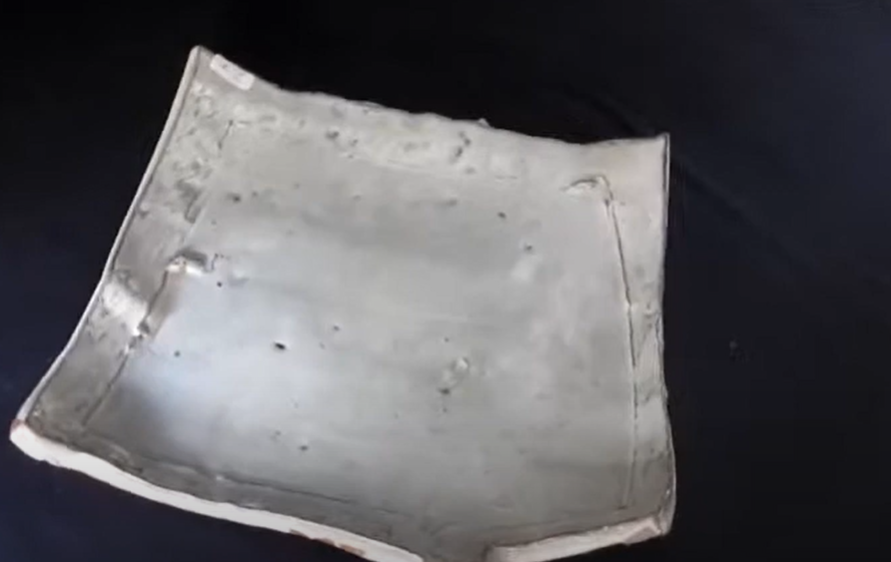

Jomon Period: The Jomon period lasted from around 14,000 BC to 300 BC and is named after the distinctive cord-marked pottery that characterizes this era. "Jomon" means "cord pattern" in Japanese, referring to the unique decorative technique used on the pottery.
Hand-Building Techniques: Jomon pottery was hand-built using coiling and pinching methods. Clay coils were stacked and shaped into various vessel forms, and then the surface was decorated by pressing cords or other materials into the wet clay. This resulted in the intricate cord-marked patterns, a hallmark of Jomon pottery.
Variety of Forms: Jomon pottery included various forms, including jars, bowls, and figurines. Some vessels were used for everyday purposes, such as cooking and storage, while others were likely used in rituals and ceremonies.
Functional and Decorative: While many Jomon pots were available, the period produced highly decorative and ornate pottery. Some vessels featured intricate designs and relief patterns, showcasing the artistic creativity of the Jomon people.
Firing Techniques: Jomon pottery was typically fired in open bonfires or pit kilns, resulting in various firing temperatures and colours. The firing process could create distinctive reddish-brown to dark brown or black surfaces.
Cultural Significance: Pottery played a significant role in the Jomon culture. It was used for practical purposes and held cultural and spiritual significance. Some pottery vessels were buried in pits as part of burial rituals.
Continuity and Transition: The Jomon period spanned an extended period, and pottery techniques and styles evolved over the millennia. Toward the end of the Jomon period, pottery forms began to shift, and new practices, such as the introduction of the wheel, marked the transition to the subsequent Yayoi period.
The Jomon pottery tradition is notable not only for its longevity but also for its unique and distinctive style. It reflects the connection between the Jomon people and the natural world and their artistic and technological achievements in pottery making. Jomon pottery remains a subject of archaeological study and cultural appreciation, and some examples can be found in museums worldwide.
6. Blacksmithing (Europe, 3000 BC)
Blacksmithing is a metalworking craft with a long and significant history in Europe, dating to around 3000 BC. Blacksmiths played a crucial role in shaping the development of ancient European societies by crafting tools, weapons, and various metal objects.
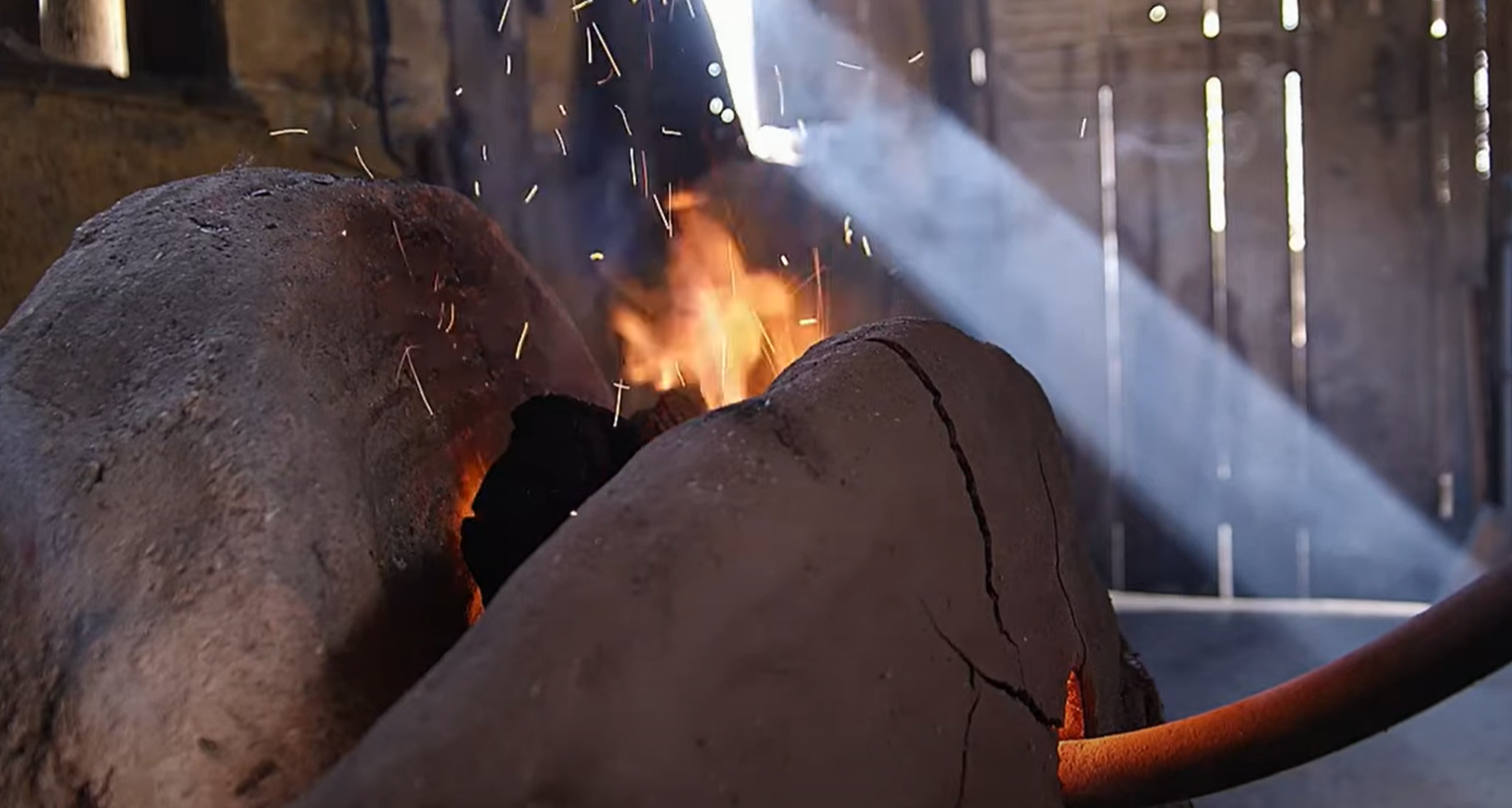 Here's an overview of blacksmithing in Europe during that time:
Here's an overview of blacksmithing in Europe during that time:
Early Metalworking: Blacksmithing in Europe originated during the Bronze Age when bronze, an alloy of copper and tin, became widespread. Early blacksmiths primarily worked with bronze to create tools, weapons, and ornaments.
Transition to Iron: Around 1200 BC, the Iron Age began in Europe, marking a significant shift in metalworking. Blacksmiths started working with iron, a more abundant and brutal metal than bronze. This transition led to the development of ironworking techniques, including smelting iron ore and forging iron into various shapes.
Blacksmith's Workshop: The blacksmith's workshop, known as a forge, was equipped with essential tools such as hammers, tongs, anvils, and bellows. The forge was where the blacksmith heated the metal to a malleable temperature, hammered it into shape, and then cooled it rapidly to temper and harden it.
Tools and Implements: Blacksmiths produced various tools and implements for agriculture, construction, and everyday life. This included ploughs, axes, knives, nails, horseshoes, and more. Their craftsmanship significantly improved the efficiency of various industries.
Weapons and Armor: Blacksmiths were also responsible for crafting weapons and armour for warriors. This included swords, spears, shields, and helmets. The quality of a blacksmith's work often determines the effectiveness and durability of these crucial items.
Cultural Significance: Blacksmiths held a special place in many European cultures and mythologies. They were often associated with fire and the forging of weapons and were sometimes considered mystical or magical figures.
Trade and Guilds: As European societies developed, blacksmiths organized into guilds, which regulated the profession, set standards, and ensured the training of apprentices. Blacksmiths also played a vital role in trade, producing items essential for daily life.
Continuity and Innovation: Blacksmithing techniques and tools continued to evolve, leading to advancements in metalworking and the production of more complex and finely crafted items.
Blacksmithing was a practical craft and a cornerstone of ancient Europe's technological and societal development. The skills and knowledge of blacksmiths were essential for the growth of communities and the defence of regions. The legacy of European blacksmithing continues to be celebrated today for its historical importance and contributions to craftsmanship and artistry.
7. Weaving (India, 5000 BC)
Weaving, the art of creating fabric by interlacing threads or fibres, has a long and rich history in India, dating back to around 5000 BC. India has been a textile production and innovation centre for thousands of years, and its textile traditions are renowned worldwide.
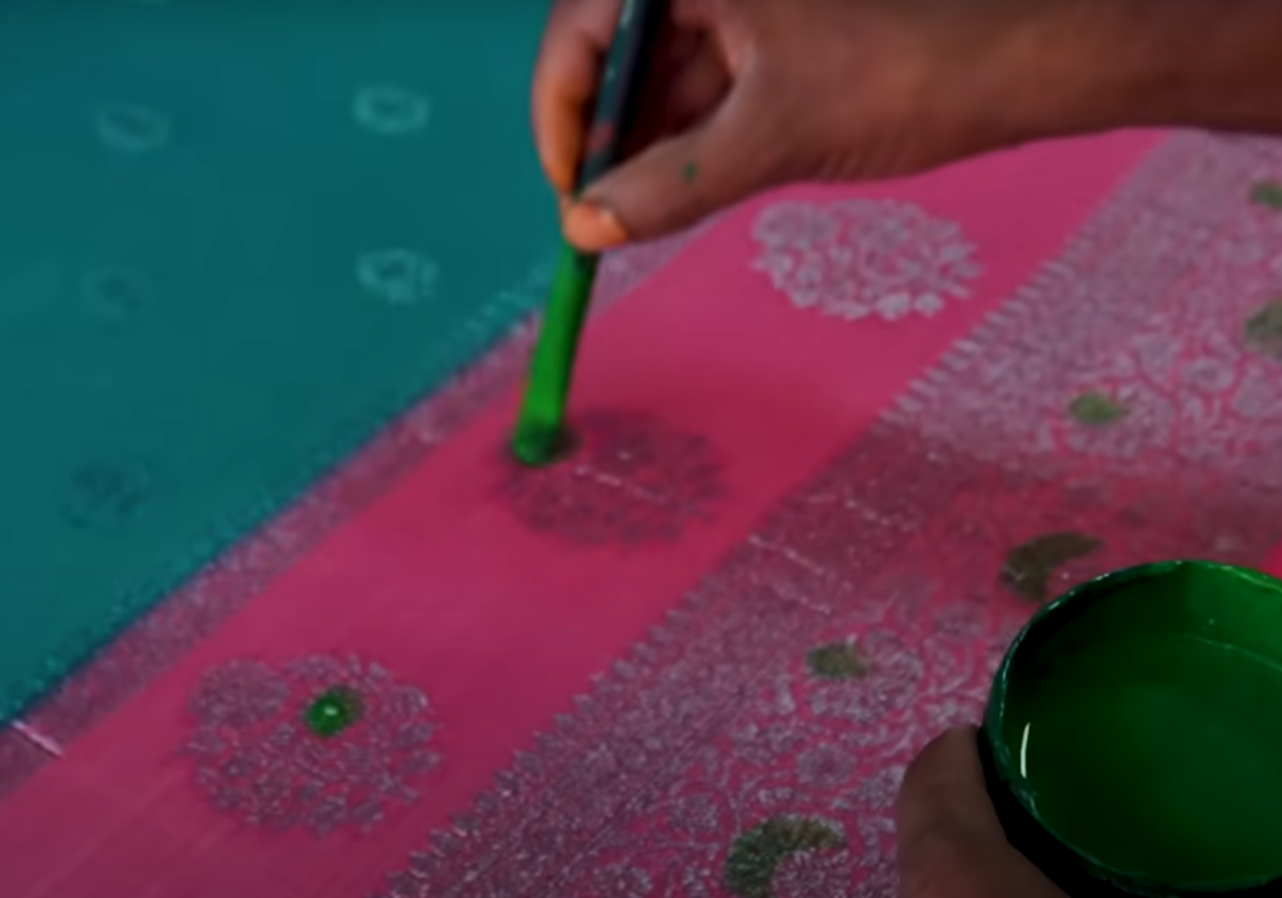
Here's an overview of weaving in ancient India during that time:
Early Textile Production: India's weaving history is deeply intertwined with its agricultural and pastoral traditions. Early inhabitants of the Indian subcontinent raised cotton and silk-producing silkworms, providing the raw materials for textile production.
Handloom Weaving: Ancient Indian weavers used handloom weaving techniques, which involved manually interlacing threads on a loom to create fabric. These handwoven textiles were used for clothing, household items, and trade.
Diverse Fabrics: India produces fabrics with various fibres, including cotton, silk, wool, and jute. Each region was special in textiles, and Indian textiles were highly sought after in trade.
Silk Production: India was one of the earliest regions to produce silk, particularly in the southern state of Karnataka. Sericulture (the cultivation of silkworms) was practised, and silk was woven into luxurious fabrics that were exported to other parts of Asia and beyond.
Dyeing Techniques: Indian weavers were skilled in various dyeing techniques, creating vibrant and intricate patterns. Natural dyes derived from plants, minerals, and insects were used to colour the threads and fabrics.
Cultural Significance: Textiles held immense cultural and religious significance in ancient India. They were used for clothing, including elaborate garments by royalty and priests. Textiles were also used for religious rituals and played a role in storytelling and art.
Trade and Exports: Indian textiles were highly valued in international trade. The famous "Silk Road" facilitated the Exchange of Indian materials with the Roman Empire, China, Central Asia, and other regions. Indian textiles were in great demand due to their quality and craftsmanship.
Weaving Communities: Over time, weaving communities developed in various regions of India. These communities often preserved their traditional weaving techniques and passed them down through generations.
Evolution of Weaving: Weaving techniques and designs evolved over the centuries, influenced by various cultures and regions. Innovations in loom technology and the introduction of new weaving patterns contributed to the diversity of Indian textiles.
Modern Indian Textiles: India's weaving tradition thrives in the contemporary era. Handwoven textiles, such as sarees, dhotis, and shawls, remain popular in India and internationally. India is also a significant player in the global textile industry, producing various fabrics and garments.
Weaving in ancient India was a practical skill and an art form reflecting the country's cultural diversity and creativity. The rich tapestry of Indian textiles and weaving traditions continues to be celebrated and cherished.
8. Basketry (Africa, 16,000 BC)
Basketry, the craft of weaving flexible materials like plant fibres or reeds to create baskets and other containers, has a long history in Africa dating back thousands of years. African basketry traditions are diverse and have played a crucial role in various African communities' daily life, culture, and economy.
/img/news/2023/africanbasketweaving.png
Here's an overview of basketry in Africa around 16,000 BC:
Early Beginnings: Basketry in Africa can be traced back to prehistoric times, with some evidence suggesting that it dates back to 18,000 to 16,000 BC. This craft was born out of the need for functional containers for gathering, storing, and transporting food and other valuable purposes.
Materials: African basketry relies on various natural materials, including grasses, leaves, palm fronds, reeds, vines, bark, and plant fibres. The choice of materials often depended on what was readily available in a particular region.
Weaving Techniques: African basketry is characterized by many weaving techniques and styles. Different regions and cultures developed their unique approaches to basket weaving, resulting in a rich diversity of patterns, shapes, and designs.
Functional and Cultural Significance: Baskets served many practical purposes in African societies. They were used for carrying and storing food, water, and other goods. Additionally, baskets were often imbued with cultural and symbolic significance and were used in ceremonies, rituals, and everyday life.
Trade and Exchange: African baskets played a significant role in trade networks due to their craftsmanship and functionality. They were often exchanged for other goods as a currency or trade commodity.
Regional Styles: African basketry is incredibly diverse, with distinct styles emerging from different regions and cultural groups. For example, the Zulu people of Southern Africa are known for their intricate and colourful baskets, while the Dogon people of Mali create unique conical baskets. The patterns and techniques used can convey specific cultural meanings and stories.
Innovation and Adaptation: African basketry has evolved and adapted to changing needs and materials over the centuries. Some contemporary basket weavers incorporate modern materials and techniques while preserving traditional designs and skills.
Artistic Expression: African basketry is a practical craft and creative expression. Many African basket weavers create stunning patterns reflecting their communities' cultural heritage and artistic sensibilities.
Preservation and Revival: Efforts have been made to preserve and revive traditional African basketry techniques. Organizations and individuals work to document and promote these skills, ensuring that this important cultural heritage is passed on to future generations.
African basketry is a vibrant and evolving craft deeply rooted in tradition and culture. It exemplifies the resourcefulness and creativity of African communities and highlights the importance of traditional crafts in the continent's history and identity.
9. Jewelry making (Middle East, 3000 BC)
Jewellery making is an ancient craft practised for thousands of years in the Middle East. The art of creating jewellery dates back to around 3000 BC in this region, and it has played a significant role in the culture, religion, and trade of various Middle Eastern civilizations.
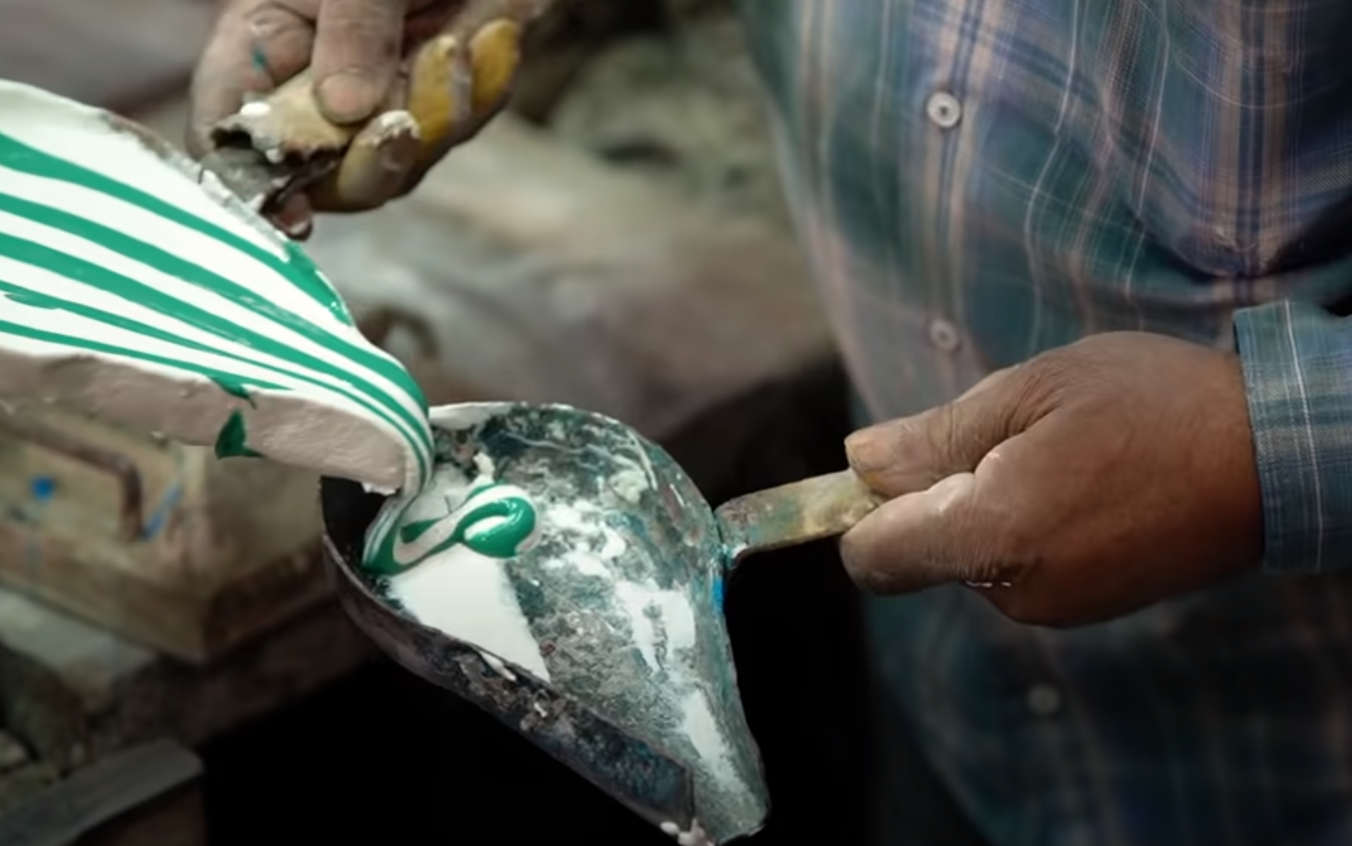
Here's an overview of jewellery making in the Middle East during that time:
Early Materials: In the early history of jewellery making in the Middle East, artisans used a variety of materials, including natural gemstones, metals such as gold and silver, as well as semi-precious stones like carnelian, lapis lazuli, and turquoise. These materials were often sourced from local mines or obtained through trade.
Craftsmanship and Techniques: Middle Eastern jewellery makers were skilled craftsmen who used various techniques to create intricate and elaborate pieces. These techniques included metalworking, stone cutting, engraving, filigree, and granulation. The level of craftsmanship was often exceptional, resulting in finely detailed and exquisite jewellery.
Symbolism and Meaning: Jewelry in the Middle East held deep cultural and symbolic significance. It was often worn as personal adornment but played roles in religious rituals, status, and protection. Certain symbols and motifs, such as the evil eye, were common in Middle Eastern jewellery, serving as protective talismans.
Cultural and Religious Influence: The Middle East has been home to several influential ancient civilizations, including the Sumerians, Egyptians, Persians, and Phoenicians. Each of these cultures contributed to the development of jewellery design and techniques. For example, ancient Egyptian jewellery was known for its use of bright colours and symbolism related to gods and the afterlife.
Trade and Exchange: The Middle East has historically been a crossroads for trade between Asia, Africa, and Europe. Jewellery was often a valuable commodity used for trade and Exchange. It was transported along ancient trade routes like the Silk Road and the Incense Route.
Tribal and Nomadic Traditions: Nomadic and tribal cultures in the Middle East also had unique jewellery traditions. These pieces often reflected the nomadic groups' cultural identity, beliefs, and lifestyle. Materials like silver and semi-precious stones were commonly used.
Continuity and Revival: The tradition of jewellery-making in the Middle East has continued to evolve over the millennia. Many ancient techniques and designs have been passed down through generations, and artisans in the region still create jewellery inspired by their rich cultural heritage. Additionally, there has been a resurgence of interest in traditional Middle Eastern jewellery in contemporary fashion.
Archaeological Discoveries: Archaeological excavations in the Middle East have unearthed numerous ancient jewellery pieces, shedding light on the history of the region's jewellery-making. These discoveries have provided valuable insights into the craftsmanship and symbolism of old Middle Eastern jewellery.
Jewellery-making in the Middle East is a testament to history's enduring creativity and cultural significance. The legacy of this ancient craft can be seen not only in museums and historical artefacts but also in the thriving contemporary jewellery industry of the Middle East.
10. Stained glass (Europe, 11th century)
Stained glass, the art of creating coloured glass windows and panels by incorporating various pigments and metallic salts into the glass, has a rich history in Europe, dating back to the Roman Empire. However, during the Gothic period, particularly in the 11th century, European stained glass artistry saw significant developments and became an integral part of medieval architecture and religious expression.

Here's an overview of stained glass during the 11th century in Europe:
Early Stained Glass: Stained glasswork in Europe began during the Roman period, but many early examples were lost. Some fragments from Roman and early Christian times have been preserved, indicating an early interest in coloured glass.
Gothic Revival: Stained glass came into its own during the Gothic period (12th to 16th centuries), with the 11th century serving as a transitional phase. The Gothic style of architecture, characterized by soaring cathedrals and large windows, provided the perfect canvas for the art of stained glass.
Romanesque Influence: In the 11th century, the Romanesque architectural style was predominant in Europe. While not as celebrated for its stained glass as the later Gothic period, Romanesque churches incorporated early windows, often characterized by simple geometric designs and biblical scenes.
Technical Advancements: Technological advancements in the production of stained glass occurred during this period. Glassmakers developed techniques for creating coloured glass by adding metallic oxides to the molten glass. This allowed for a broader spectrum of colours and greater control over the design.
Narrative Windows: Stained glass windows in the 11th century increasingly conveyed religious narratives to an often illiterate congregation. These windows told stories from the Bible and the lives of saints, serving as "the poor man's Bible" by illustrating religious teachings.
Cathedrals and Monasteries: Stained glass was most commonly found in cathedrals and monastic buildings. These large and impressive structures used stained glass not only as a means of artistic expression but also as a way to create a mystical and awe-inspiring atmosphere within the religious space.
Symbolism and Allegory: Stained glass windows were filled with symbolic elements, with each colour, design, and figure conveying a specific religious or moral message. Light passing through the glass was thought to represent divine illumination and enlightenment.
Medieval Craftsmanship: Stained glass windows were created by highly skilled glassmakers or glaziers. These artisans collaborated with other craftsmen, including stonemasons and painters, to integrate the windows seamlessly into the architectural design.
Continuity and Revival: The tradition of stained glass continued to evolve in the subsequent centuries, with the Gothic period (12th to 16th centuries) representing the zenith of stained glass art in Europe. In the 19th century, a Gothic Revival movement renewed interest in the art, creating many stained glass windows in churches and public buildings.
Stained glass remains an enduring art form and continues to be appreciated for its intricate designs, vibrant colours, and spiritual significance. Many stained glass windows from the Gothic period have survived to the present day, serving as both artistic treasures and significant historical artefacts.
11. Calligraphy (China, 16th century BC)
Calligraphy in China has a rich and ancient history dating back thousands of years, traditionally traced to the Shang Dynasty (16th century BC to 11th century BC). The development of Chinese calligraphy over the centuries has made it a highly regarded and cherished art form.
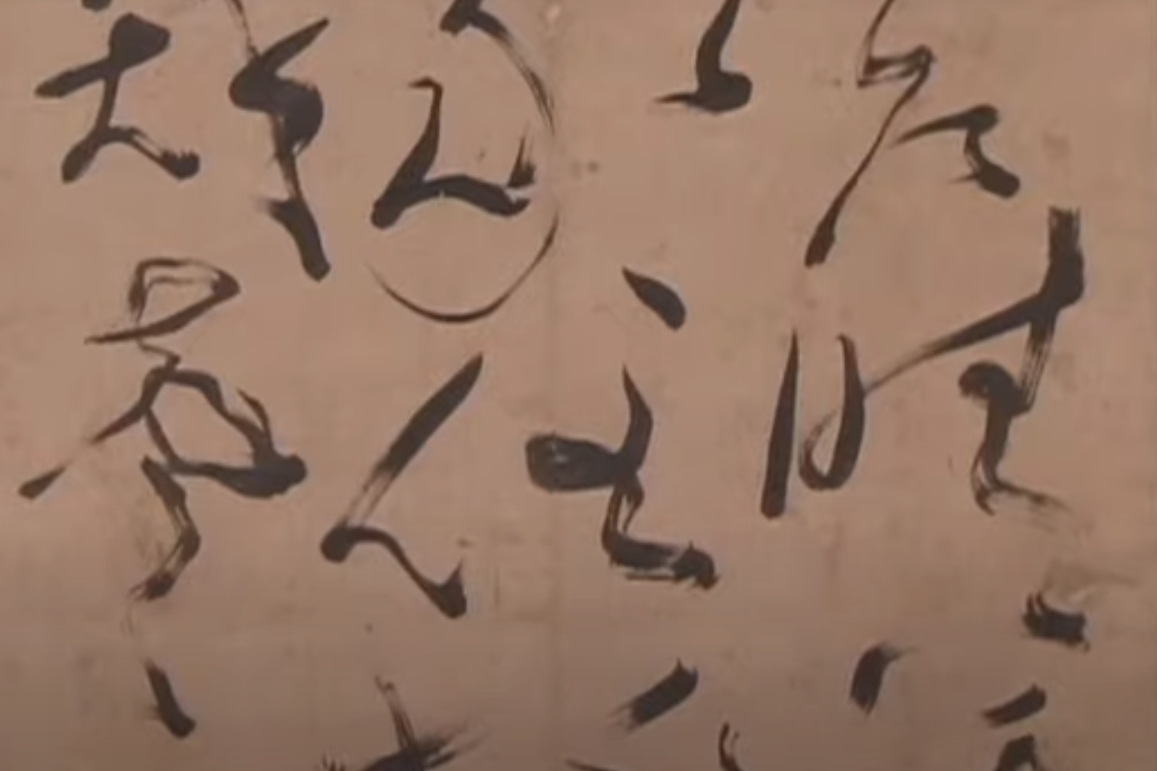
Here are some key points about calligraphy in China during the 16th century BC:
Oracle Bone Script: The earliest form of Chinese writing from this period is called Oracle Bone Script. It was primarily inscribed on turtle shells and animal bones and used for divination. This Script consisted of simple pictographs and symbols.
Bronze Inscriptions: As the Shang Dynasty transitioned into the Zhou Dynasty (11th century BC to 256 BC), the Script evolved into what is known as Bronze Inscriptions. These inscriptions were found on ritual bronze vessels and weapons and featured more complex characters.
Development of Seal Script: During the later Zhou Dynasty, especially in the Warring States Period (475 BC to 221 BC), the Script continued to evolve. Seal Script (Zhuanshu) emerged during this time and was characterized by its square and angular shapes. Seal Script was used for official seals and inscriptions on essential documents.
Clerical Script (Lishu): Clerical Script, also known as Lishu, developed during the Han Dynasty (206 BC to 220 AD). It was a more standardized and simplified script, making it easier to read and write. Lishu became the foundation for many subsequent calligraphic styles.
Artistic Expression: Calligraphy began to be appreciated for its practical use and as an art form during this period. Skilled calligraphers were highly regarded, and their works were often collected and treasured.
Influence on East Asian Calligraphy: Chinese calligraphy from the Shang Dynasty onwards profoundly influenced the development of calligraphy in neighbouring East Asian countries, including Japan and Korea. These countries adopted Chinese characters and developed their unique calligraphic traditions.
Materials and Techniques: Calligraphy in the 16th century BC used various materials such as brushes, ink, and multiple types of paper and silk. Controlling brush strokes to create different line thicknesses and styles was crucial in calligraphy.
Chinese calligraphy continued evolving over the centuries, with different styles and scripts emerging in dynastic periods. The art of calligraphy remains an important aspect of Chinese culture and continues to be practised and appreciated. It reflects the written word's beauty and the Chinese Script's deep cultural and historical significance.
12. Wood carving (Japan, 7th century)
Wood carving in Japan has a long and storied history that dates back to ancient times. During the 7th century, corresponding to the Asuka period (592-710 AD), Japan underwent significant cultural and artistic transformations, including developing wood carving as a prominent creative expression.

Here are some key aspects of wood carving in Japan during the 7th century:
Buddhism's Influence: One of the most significant factors contributing to the growth of wood carving during this period was the introduction of Buddhism to Japan from China and Korea. The need for religious icons, sculptures, and temple decorations came with Buddhism. These requirements spurred the development of wood carving as an art form.
Early Buddhist Sculptures: Wooden sculptures, often depicting Buddhist deities and bodhisattvas, were among Japan's earliest forms of wood carving during the 7th century. Skilled craftsmen carved these figures to adorn Buddhist temples and shrines.
Horyu-ji Temple: Horyu-ji Temple in Nara Prefecture is a renowned Buddhist temple that dates back to the 7th century and is known for its wooden structures and carvings. It houses some of Japan's oldest surviving wooden sculptures and architectural elements.
Styles and Techniques: The wood carving of this period was characterized by a fusion of indigenous Japanese techniques and the influence of Chinese and Korean carving styles. Intricate details, graceful curves, and serene expressions were standard features of these sculptures.
Emphasis on Naturalism: Japanese wood carvers of the 7th century were skilled in portraying naturalistic features and expressions in their sculptures. These artists aimed to capture the essence and personality of the deities they were representing.
Materials: The primary wood used for carving during this period was cypress, which was readily available and had excellent carving properties. The wood was carefully selected for its durability and resistance to decay.
Cultural Significance: Wood carving during the 7th century played a vital role in Japan's spread and acceptance of Buddhism. It helped convey Buddhist teachings and provided a visual connection to the spiritual world.
Continued Legacy: The techniques and styles of wood carving developed during the Asuka period continued to influence Japanese art and culture throughout subsequent centuries. This legacy can still be seen in contemporary Japanese woodwork and sculpture.
The wood carvings from Japan's Asuka period represent a crucial chapter in Japanese art and culture history. They served religious and decorative purposes and played a role in Japan's cultural development and the assimilation of foreign influences, particularly from China and Korea, into the Japanese artistic tradition.
13. Metalworking (India, 3000 BC)
Metalworking in India has a long and illustrious history that dates back thousands of years, with evidence of advanced metallurgy dating to around 3000 BC and possibly even earlier. During this period, several significant developments in metalworking occurred in the Indian subcontinent:
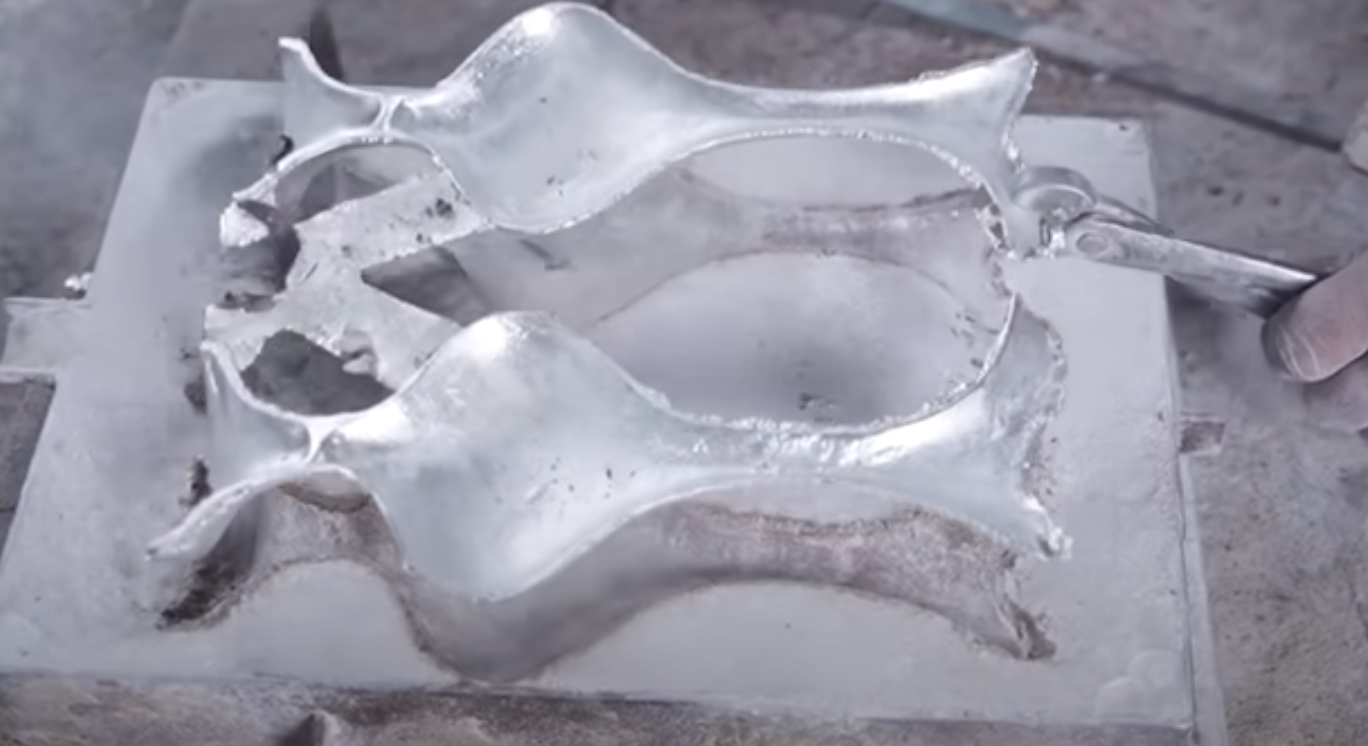
Copper and Bronze Age: The early period of Indian metalworking, around 3000 BC, is often associated with the Copper Age, during which copper was the primary metal used for tools and artefacts. Over time, the knowledge of alloying copper with tin to produce bronze emerged, leading to the Bronze Age in India. Bronze was a significant technological advancement, making more durable and versatile tools and weapons.
Indus Valley Civilization: The Indus Valley Civilization, one of the world's oldest urban civilizations, existed from approximately 3300 BC to 1300 BC in modern-day Pakistan and northwestern India. Archaeological findings from this civilization include copper and bronze artefacts, suggesting a high level of metallurgical knowledge and skill.
Sophisticated Metal Artifacts: Metalworkers in ancient India crafted a wide range of sophisticated metal artefacts, including tools, weapons, jewellery, religious objects, and sculptures. These items often showcased intricate designs and exceptional craftsmanship.
Iron Age: While the use of iron began to spread globally during the Iron Age, which started around 1200 BC, it became more prevalent in India over time. The widespread adoption of iron tools and weapons significantly transformed agriculture, warfare, and construction practices.
The Vedas: The Vedas, ancient Indian texts composed between 1500 BC and 500 BC, contain references to various metals, their properties, and the processes involved in metalworking. This suggests a well-established knowledge of metallurgy during that period.
Artistic and Religious Significance: Metalworking was crucial in creating religious and artistic objects in ancient India. Elaborate sculptures of deities, temple bells, and ritual implements were often made from bronze and other metals.
Legacy: The knowledge and skills developed in ancient Indian metalworking continued to evolve and thrive in subsequent centuries. India became renowned for its metalwork, including crafting exquisite jewellery, metal sculptures, and architectural elements.
Influence on Trade: The quality of Indian metalwork contributed to the region's significance in the ancient trade routes, including the Silk Road. Indian metal objects were highly sought after and traded with other cultures.
In summary, the history of metalworking in India during 3000 BC witnessed the transition from copper to bronze and, later, the emergence of iron as a dominant metal. The expertise in metallurgy and metal craftsmanship from this period profoundly impacted the development of Indian art, culture, and technology and left a lasting legacy that can still be seen in India's rich tradition of metalwork today.
14. Lacemaking (Europe, 16th century)
Lacemaking in Europe during the 16th century marked a significant period in the history of lace production. Lace, a delicate fabric created by looping and twisting threads, became a highly prized and fashionable commodity.
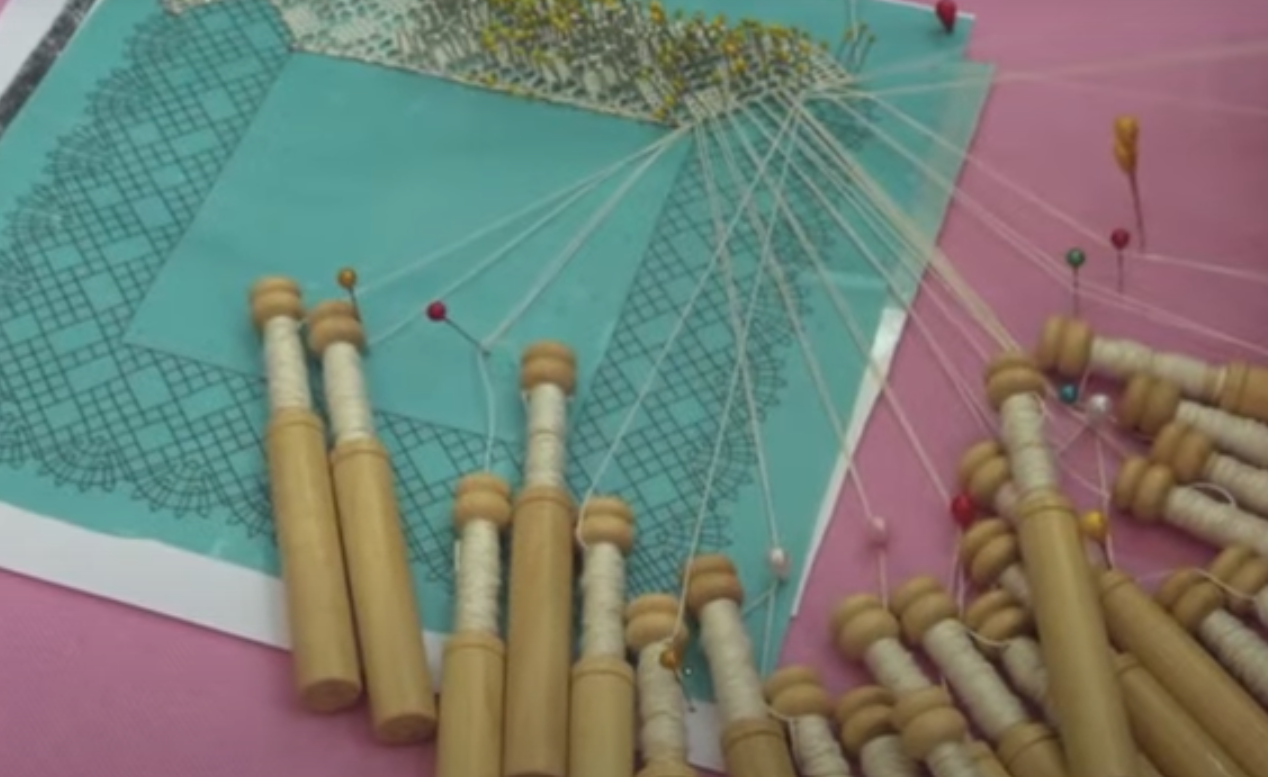
Here are some key points about lacemaking in Europe during the 16th century:
Origins of Lace: The art of lacemaking in Europe is believed to have originated in Italy and Flanders (modern-day Belgium) in the late 15th century. Initially, lace was a luxury textile for the nobility and the Church.
Handmade Craftsmanship: During the 16th century, lace was entirely handmade, and skilled artisans, known as lacemakers, created it using various techniques. The most common methods included needle lace, bobbin lace, and cutwork.
Needle Lace: Needle lace, also known as "punto in aria" (stitch in the air), was created using a single needle and thread. Lacemakers build intricate designs by stitching the threads together, creating a delicate, openwork fabric.
Bobbin Lace: Bobbin lace involves using multiple bobbins wound with thread. Lacemakers would carefully manipulate these bobbins, crossing them over each other to create the lace pattern. Bobbin lace was often used for producing wide trims and decorative elements.
Cutwork: Cutwork lace, or "punto tagliato," involves cutting away fabric parts to create openwork designs. The remaining threads were often decorated with embroidery or embellished with needle or bobbin lace.
Popularity and Fashion: Lace quickly gained popularity among European royalty, aristocracy, and the upper class. It was used to embellish clothing, including collars, cuffs, and ruffs. The demand for lace was so high that it became known as "white gold."
Trade and Export: As the demand for lace grew, lace centres and guilds were established in various European cities, including Venice, Brussels, and Alençon. These centres often specialized in specific lace techniques. Lace was also exported to other parts of the world.
Education and Apprenticeships: Lacemaking was passed down through apprenticeships and often taught within families or by experienced lacemakers. Apprentices would spend years learning the intricate techniques involved in lacemaking.
Status Symbol: Lace symbolized wealth and social status during the 16th century. The complexity and cost of lace made it a luxury item that only the elite could afford.
Evolution: Over time, lacemaking techniques continued to evolve, leading to new styles and forms of lace in subsequent centuries. The 17th and 18th centuries saw further developments in lace design and production.
Lacemaking in the 16th century was an important industry and a significant cultural and fashion phenomenon. It played a pivotal role in the textile history of Europe and contributed to the development of intricate textile arts that continue to be valued and admired today.
15. Bookbinding (Europe, 12th century)
Bookbinding in Europe during the 12th century marked a pivotal moment in book production and preservation history. This period saw the transition from early manuscript books to more sophisticated and durable bound books.
Here are some key points about bookbinding in Europe during the 12th century:
Manuscript Culture: Before the 12th century, books in Europe were predominantly manuscripts produced by scribes. These manuscripts were often created on parchment or vellum, durable materials made from animal hides.
Sewing and Binding: During this time, sewing and binding individual folios (sheets of parchment or vellum) became more refined. Books were typically constructed by sewing gatherings (groups of folios) and then attaching the gatherings to wooden boards.
Use of Wooden Boards: Wooden boards, usually made of oak, were used as covers for the bound books. These boards provided structural support and protection for the fragile parchment or vellum pages.
Decoration: Bookbinding in the 12th century often featured decorative elements, including metal clasps, bosses, and corner pieces on the covers. These embellishments added to the book's aesthetics and helped secure the book when closed.
Leather Binding: Leather, particularly calf or pigskin, was commonly used to cover the wooden boards. Leather bindings were not only functional but also contributed to the durability and longevity of the books.
Monastic Influence: Monasteries played a crucial role in the production of books during this period. Monks and scribes within monastic scriptoria were responsible for copying and binding religious texts, manuscripts, and other essential documents.
Variety of Styles: Different regions and scriptoria had unique bookbinding styles and techniques. For example, Carolingian bookbinding, influenced by the Carolingian Renaissance, emphasized clarity and legibility, while Romanesque bookbinding featured more ornate decoration.
Production Expansion: The 12th century witnessed an expansion in the production of books, thanks in part to the growth of universities and the increased demand for scholarly and religious texts. This led to a greater need for skilled bookbinders.
Preservation and Accessibility: Developing more robust bookbinding techniques contributed to knowledge protection. Bound books were better suited to withstand the test of time, making it possible for information to be passed down through the centuries.
Transition to the Codex: The codex, a book format with pages bound on one side, became increasingly prevalent. This format eventually replaced the older scroll format and became the standard for book production.
The evolution of bookbinding in Europe during the 12th century marked a crucial phase in the history of books and manuscripts. The refined techniques and materials used in bookbinding during this era laid the foundation for the continued development of the printed book in the subsequent centuries, ultimately shaping the way information was disseminated and preserved in Western culture.
16. Shoemaking (Europe, 15th century)
Shoemaking in Europe during the 15th century marked a significant period in the history of footwear craftsmanship. This era transitioned from simple, functional shoe designs to more elaborate and specialized shoe production techniques.
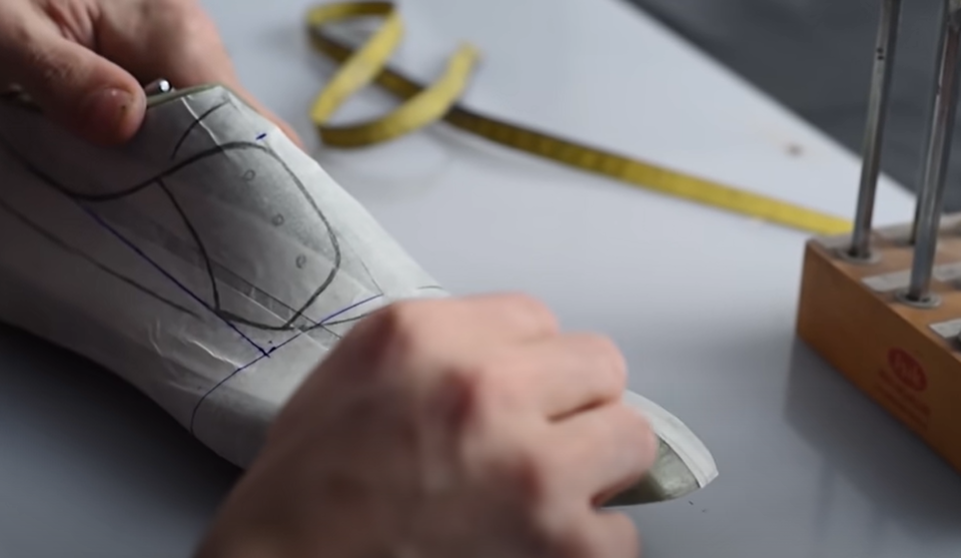
Here are some key points about shoemaking in Europe during the 15th century:
Handcrafted Footwear: During the 15th century, shoes were primarily handcrafted, and shoemaking was a skilled craft practised by cobblers and cordwainers. These artisans worked with various materials, including leather, textiles, and sometimes wood.
Materials: Leather was the most common material used for shoemaking during this period. It was readily available and could be worked into durable and comfortable footwear. Exotic materials like silk and velvet were reserved for more luxurious and decorative shoes.
Footwear Types: Different shoes were produced to suit various occasions and social classes. Some common styles included pointed-toe shoes, slip-on shoes, and ankle-high boots. Nobility and the wealthy often had shoes tailored to their preferences and fashions.
Decorative Elements: Shoe decoration became more elaborate during the 15th century. Shoes were embellished with intricate embroidery, patterns, and sometimes jewels. The designs often reflected the prevailing fashion trends of the time.
Specialization: Shoemakers began to specialize in particular aspects of shoemaking. Some focused on crafting the soles and heels, while others specialized in creating elaborate decorations or intricate stitching.
Tanning and Leatherworking: The tanning and preparation of leather were essential in shoemaking. Leather was tanned usi

